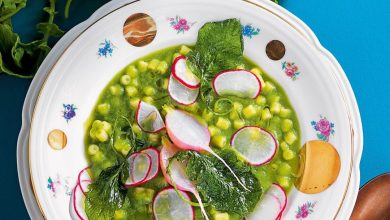Japanese Red Rice Delight: Adzuki Bean Sekihan Recipe
Sekihan, also known as “red rice” or “azuki bean rice,” is a traditional Japanese dish that holds cultural significance and culinary delight. Its vibrant red color symbolizes celebration and joy, making it a popular choice for festive occasions such as weddings, birthdays, and New Year’s celebrations. This beloved dish combines the nutty sweetness of adzuki beans with the sticky texture of glutinous rice, creating a harmonious balance of flavors and textures that is both comforting and satisfying.
To embark on your culinary journey into the heart of Japanese cuisine, let’s delve into the intricacies of preparing this cherished dish. With a cook time of just 30 minutes and a total preparation time of 1 hour, Sekihan offers a relatively quick and easy way to transport your taste buds to the enchanting landscapes of Japan.
Ingredients:
- Adzuki Beans (1/2 cup): These small, red beans are a staple in Japanese cooking, prized for their sweet, nutty flavor and nutritional benefits.
- Glutinous Rice (3 cups): Also known as sticky rice or sweet rice, this short-grain rice variety becomes delightfully sticky when cooked, perfect for forming the foundation of Sekihan.
- Water (3 1/2 cups): Essential for cooking both the adzuki beans and glutinous rice to perfection.
- Sesame Seeds (1 tablespoon): These tiny seeds add a nutty aroma and crunchy texture to the dish, enhancing its overall appeal.
- Watercress (optional, for garnish): Adding a touch of freshness and color, watercress serves as a beautiful finishing touch to your Sekihan.
Instructions:
-
Prepare the Adzuki Beans: In a medium saucepan, combine the adzuki beans with water, bringing the mixture to a gentle boil over medium heat. Once boiling, reduce the heat to low and allow the beans to simmer for approximately 45 minutes to one hour, or until they are soft but not completely cooked. This slow simmering process allows the beans to absorb the flavors of the water, resulting in a rich and flavorful base for your Sekihan.
-
Cool and Drain the Beans: Once the adzuki beans have reached the desired consistency, allow them to cool to room temperature before draining them, reserving the cooking liquid for later use. This liquid, infused with the essence of the beans, will impart a depth of flavor to the dish that cannot be replicated.
-
Combine Beans, Rice, and Water: In a large mixing bowl, combine the cooked adzuki beans, glutinous rice, and water, along with 3 tablespoons of the reserved cooking liquid from the beans. This step ensures that every grain of rice is infused with the essence of the adzuki beans, resulting in a dish that is bursting with flavor.
-
Cook the Rice: Transfer the mixture to a rice steamer and cook it in the usual manner until the rice is tender and cooked through. The steam gently envelops the beans and rice, allowing them to meld together into a cohesive and delicious dish.
-
Serve and Garnish: Once the Sekihan is cooked to perfection, transfer it to a decorative shallow dish or lacquer tray, spreading it out evenly. Sprinkle the sesame seeds over the surface of the rice, adding a final flourish of flavor and texture. For an extra touch of elegance, garnish the dish with fresh watercress leaves, enhancing its visual appeal and adding a burst of freshness.
-
Enjoy!: Sekihan is best enjoyed fresh and warm, served as a standalone dish or as part of a larger Japanese meal. Its vibrant red hue, symbolic of joy and celebration, is sure to delight both the eyes and the palate, making it a memorable addition to any dining experience.
Additional Tips:
-
Alternative Cooking Method: If you don’t have a rice cooker, fear not! Sekihan can also be prepared on the stove in a regular pot. Simply follow the same instructions, adjusting the cooking time and water accordingly. Remember to use the proportion of water to rice provided in this recipe, rather than the typical Western ratio of 2 parts water to 1 part rice, as the rice has already been soaked and requires less water to cook.
-
Customization: Feel free to customize your Sekihan according to your taste preferences. You can add additional ingredients such as shiitake mushrooms, konbu (kelp), or mirin (sweet rice wine) for extra depth of flavor. Don’t be afraid to experiment and make this dish your own!
-
Storage: Any leftovers can be stored in an airtight container in the refrigerator for up to 2-3 days. To reheat, simply steam the Sekihan until heated through, ensuring that its delicious flavors are preserved.
With its rich history, vibrant colors, and irresistible flavors, Sekihan encapsulates the essence of Japanese cuisine, inviting you to savor each bite and embark on a culinary adventure like no other. So gather your ingredients, unleash your creativity, and let Sekihan become a beloved staple in your culinary repertoire. From lovewithrecipes.com to your kitchen, may every bite of Sekihan be a celebration of love, tradition, and the joy of cooking. Kampai! (Cheers!)








